1. Epidemiology
1.1. 5.7 Million adults in US
1.2. 1 in 9 deaths caused by HF
1.3. about 50% die within 5 years of diagnosis
1.4. Costs $30.7 Billion/year
2. Pathophysiology
2.1. Improper pumping by heart
2.1.1. weak muscle
2.1.1.1. dilated V chamber
2.1.2. enlarged muscle
2.1.2.1. small V chamber
2.2. decreased perfusion to kidneys
2.2.1. Activation of RAAS
2.2.1.1. Fluid retention
2.2.1.2. Na
2.2.2. dysfunction
2.2.2.1. failure
2.3. Excessive fluid volume
2.3.1. lungs
2.3.1.1. congestion
2.3.1.1.1. shortness of breath
2.3.2. peripheral
2.3.2.1. edema
2.3.2.1.1. legs
2.3.2.1.2. arms
2.3.2.1.3. ascites
2.3.3. liver
2.3.3.1. pressure causes scarring
3. Risk Factors
3.1. High BP
3.1.1. wk load of myocardium
3.1.1.1. stiffness
3.1.1.2. weakness
3.2. CAD and MI
3.2.1. most common cause
3.3. Certain meds
3.3.1. NSAID
3.3.2. Diabetic medications
3.3.2.1. Avandia
3.3.2.2. Actos
3.4. Sleep apnea
3.4.1. O2
3.5. heart defects
3.5.1. congenitial
3.5.2. valvular
3.6. viruses
3.6.1. myocarditsis
3.7. ETOH
3.8. Smoking
3.9. obesity
3.10. Other Diseases
3.10.1. irregular heart beat
3.10.2. DM
3.10.3. HIV
3.10.4. Thyroid Dysfunction
3.10.4.1. hypo
3.10.4.1.1. ☝🏻TSH 👇T4
3.10.4.2. hyper
3.10.5. hemochromatosis
3.10.5.1. iron
3.10.6. Amyloidosis
3.10.6.1. protien
3.10.7. PE
3.10.8. cardiomyopathy
3.10.9. Coarctation
3.10.9.1. PVR
3.10.10. Cystic Fibrosis
3.10.10.1. PVR
4. Clinical Presentation, S/sx
4.1. Shortness of breath
4.2. weakness
4.3. fluid retention
4.3.1. weight
4.3.1.1. edema
4.3.1.2. ascites
4.4. rapid or irregular heart beat
4.5. ability to exercise
4.6. Chronic cough or wheeze
4.6.1. pink/blood tinged phlegm
4.7. urination at night
4.8. chest pain
4.8.1. MI
4.8.2. Arrhythmia: fast or slow
4.8.2.1. AFib RVR
4.8.2.2. Re-entry SVT
4.8.2.3. AVB 2
4.8.2.4. CHB 3: Emergency Pacemaker/AICD
4.8.2.4.1. Cardiology / EP Consult
4.8.2.4.2. Notify Cath Lab
4.8.2.4.3. Call Hospital Code
4.8.2.4.4. Consider AC therapy
4.9. alertness
4.10. nausea
4.10.1. appetite
5. Diagnosis
5.1. EKG
5.2. ECHO
5.3. CXR
5.4. Blood work
5.4.1. BNP
5.4.2. TNT
5.4.3. CK-MB
5.4.4. CBC + Diff
5.4.4.1. R/O infection
5.4.5. ABG
5.4.6. CMP
5.4.6.1. kidneys
5.4.7. Thyroid
5.4.7.1. TSH
5.4.7.2. T3 and T4
5.4.8. LFTs
5.4.8.1. AST
5.4.8.2. ALT
5.5. CT or MRI
5.6. Stress Test
5.7. Coronary Angiogram
5.8. Myocardial Biopsy
6. Treatment
6.1. Lifestyle changes
6.1.1. Diet
6.1.1.1. Na
6.1.1.2. H2O
6.1.2. weight
6.1.2.1. exercise
6.1.2.2. cardiac rehab
6.1.2.3. weight daily
6.1.3. medication complience
6.1.4. education
6.1.4.1. disease process
6.1.4.2. medications
6.2. Medications
6.2.1. ACE-Inhibitor
6.2.1.1. widens blood vessels
6.2.1.2. PVR
6.2.1.2.1. easier to pump
6.2.1.3. prevent changes in shape of heart
6.2.2. ARB
6.2.3. ARNI
6.2.4. Beta Blocker
6.2.4.1. HR
6.2.4.2. BP
6.2.4.3. workload
6.2.5. Diuretic
6.2.5.1. Na
6.2.5.2. edema
6.2.6. Nitrate with hydralazine
6.2.6.1. relax & dilate blood vessels
6.2.7. Digoxin
6.2.7.1. helps contractility
6.2.8. Potassium sparing diuretic
6.2.8.1. Saves K+
6.2.8.2. Na
6.2.8.3. Fluid
6.2.9. Inotropes
6.2.9.1. In-patient IV
6.3. Follow-up
6.3.1. PCP
6.3.2. Cardiologist
6.4. Surgery
6.4.1. CABG
6.4.2. Valve Replacement or repair
6.4.3. ICD or Pacemaker
6.4.4. Heart pumps
6.4.4.1. VAD
6.4.4.1.1. Left
6.4.4.1.2. Right
6.4.4.1.3. Bilateral
6.4.5. Heart Transplant
